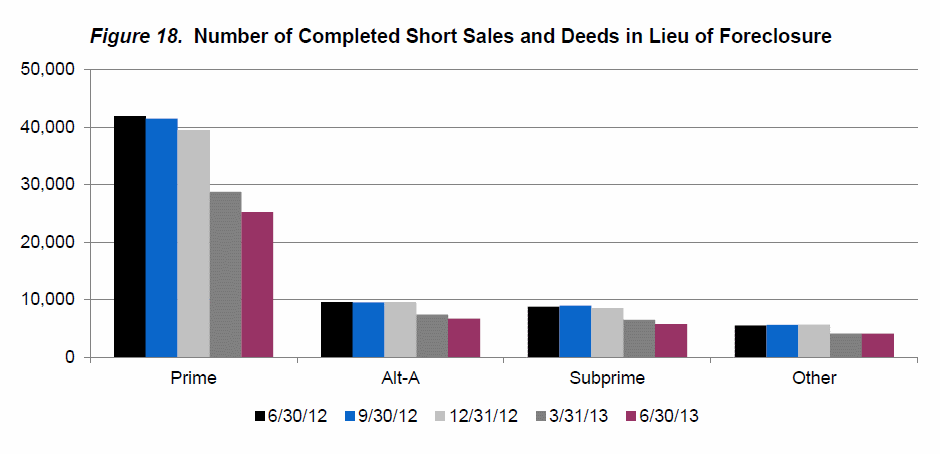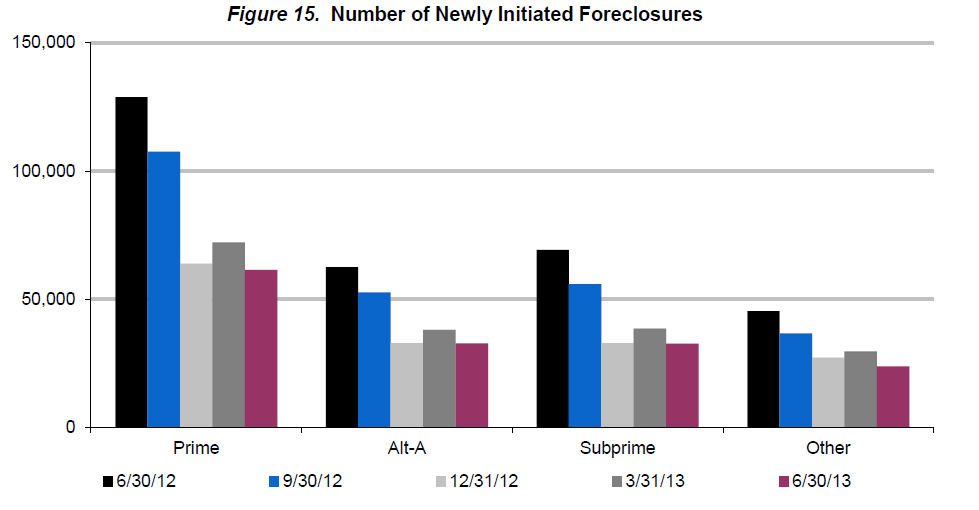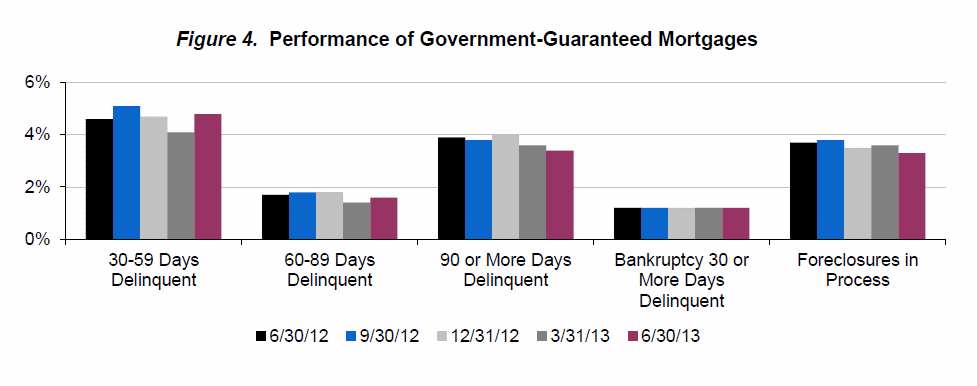Blog

Foreclosure Starts Halved over 12 Months
Foreclosure starts in thernsecond quarter of 2013 were down to half the level of a year earlier the Officernof Comptroller of the Currency (OCC) said on Thursday. There were 150,592 new foreclosures initiatedrnduring the quarter, down 50.8 percent from the second quarter of 2012 and thernfewest in any quarter since early 2008. </p
 </p
</p
OCC noted significantrnimprovements in most but not all measures of delinquency in its second quarterrnMortgage Metrics Report. Thernreport provides performance data on first-lien residential mortgages thatrnrepresent 52 percent of all those outstanding in the U.S; approximately 26.5rnmillion loans with $4.5 trillion in unpaid principal balances. </p
Strengtheningrneconomic conditions, aggressive foreclosure prevention assistance, regulatoryrnactions, and home forfeitures contributed to the improved performance, OCCrnsaid. The metrics also improved due tornservicing transfers from the selected national banks and one federal savingsrnassociation included in the report. Thernnumber of loans covered in the report has decreased 13.0 percent from a yearrnago and 23.3 percent from the end of the second quarter in 2008. Principal balances are down 13.7 percent andrn26.8 percent for the two periods. Inrnaddition to transfers the decline in the portfolio also resulted from thernreduction of mortgage debt overall.</p
At the end of thernquarter 90.6 percent of all mortgages covered in the report were current andrnperforming compared to 90.2 percent at the end of the first quarter and 88.7rnpercent a year earlier. The 30+ dayrndelinquency rate was 2.9 percent, 11.6 percent higher than the previous quarterrnand 1.8 percent above the rate a year earlier. rnDelinquencies of 60 days or more decreased to 3.8 percent from 4.0rnpercent the previous quarter and 4.4 percent the prior year.</p
Foreclosurernactivity overall reached the lowest level since OCC initiated its report in thernfirst quarter of 2008. In addition tornthe drop in starts, the number of loans in the process of foreclosure at thernend of the quarter declined 39.8 percent from the previous year to 744,369rnloans. The number of completedrnforeclosures fell 22.2 percent year-over-year to 79,960.</p
 </p
</p
Performance of governmentrnguaranteed mortgages, which comprised 24.6 percent of the serviced portfolio,rndid not improve in the second quarter but did better than a year earlier. Current and performing loans represented 85.7rnpercent of the guaranteed portfolio compared to 86.2 in Q1 and 84.9 percent inrnthe second quarter of 2012. Seriouslyrndelinquent mortgages in this part of the portfolio increased 0.5 percent fromrnthe previous quarter to 6.2 percent.</p
 </p
</p
Just over 57 percent of the portfolio were loans servicedrnfor Fannie Mae and Freddie Mac. Currentrnand performing loans were 95.1 percent of that portfolio, compared to 94.6 percentrnin the first quarter and 93.7 percent a year earlier. </p
Servicersrnimplemented more than twice as many home retention actions during the quarterrnas home forfeiture actions. There werern314,672 loan modifications, trial-period plans, and shorter term payment plansrnput in place during the quarter compared to 121,746 completed foreclosures,rnshort sales, and deeds-in-lieu. Stillrnthe foreclosure prevention activities were down 9.8 percent from the firstrnquarter and 25.2 percent from a year earlier. rn</p
Loan modifications completed in each of the last fivernquarters have performed similarly over time even though factors that canrninfluence their performance such as the average change in monthly payment, therncharacteristics and geographic location of the loans and the addition orrndeletion of modifications programs among reporting institutions havernvaried. </p
Among modifications completed in each of the last fivernquarters, 60 day delinquencies occurred at the following rate: Three monthsrnafter modification, between 5.8 and 7.7 percent; after six months, 11.5 to 14.2rnpercent; at 12 months, 16.9 to 20.9 percent. rnAmong modifications completed during the last five quarters, less thanrn16 percent were 90 or more days delinquent 12 months after modification. Loansrnmodified in the most recent four quarters appear to be re-defaulting atrnmaterially lower rates than modifications completed in earlier quarters. </p
HAMP modifications have performed better than other modificationsrnimplemented during the same periods perhaps because of HAMP’s emphasis on thernaffordability of monthly payments relative to the borrower’s income,rnverification of income, and completion of a successful trial-payment period.rnWhile these criteria result in better performance of HAMP modifications overrntime, the greater flexibility allowed through other types of modificationsrnresults in more of those modifications for borrowers who do not qualify forrnHAMP.
All Content Copyright © 2003 – 2009 Brown House Media, Inc. All Rights Reserved.nReproduction in any form without permission of MortgageNewsDaily.com is prohibited.
Latest Articles
By John Gittelsohn August 24, 2020, 4:00 AM PDT Some of the largest real estate investors are walking away from Read More...
Late-Stage Delinquencies are SurgingAug 21 2020, 11:59AM Like the report from Black Knight earlier today, the second quarter National Delinquency Survey from the Read More...
Published by the Federal Reserve Bank of San FranciscoIt was recently published by the Federal Reserve Bank of San Francisco, which is about as official as you can Read More...

Comments
Leave a Comment